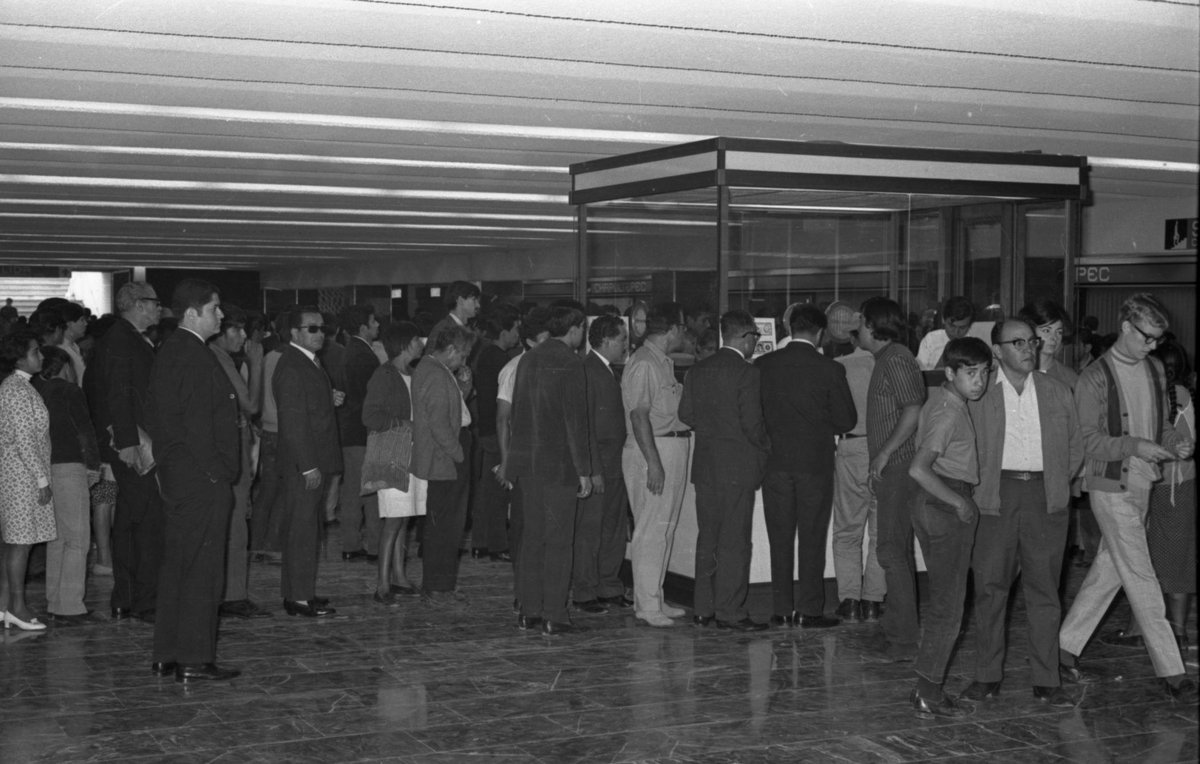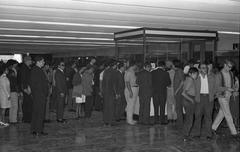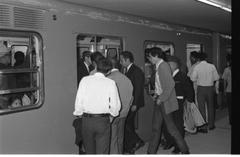
Chapultepec Mexico City: Visiting Hours, Tickets, and Tourist Guide
Date: 14/06/2025
Introduction to Chapultepec Historical Site and Its Importance
Chapultepec Park and Chapultepec Castle stand as some of the most significant landmarks in Mexico City, weaving together over 10,000 years of history, culture, and natural beauty. The name Chapultepec—“Hill of the Grasshopper” in Nahuatl—reflects its ancient roots as a sacred site for early civilizations and its crucial role in the development of the Aztec capital, Tenochtitlan. Over the centuries, Chapultepec has evolved from a vital water source and royal retreat to a public park and cultural epicenter, now encompassing world-class museums, tranquil lakes, lush gardens, and the emblematic Chapultepec Castle. Today, it is regarded as the “lungs of Mexico City” and a meeting place for residents and travelers alike, offering a dynamic window into the country’s heritage (Pro Bosque de Chapultepec; mnh.inah.gob.mx; culturestraveled.com).
Chapultepec Castle, rising atop the park’s hill, has served as a military academy, imperial palace, presidential residence, and, currently, the National Museum of History. Its layered past and the legendary defense by the Niños Héroes during the 1847 Battle of Chapultepec have cemented its place as a symbol of Mexican identity and resilience (Mexico Historico; mxunderground.com).
The park’s accessibility, extensive public transport options, and diverse attractions—ranging from the National Museum of Anthropology to serene lakes—make Chapultepec an essential stop for anyone seeking a deep and varied experience of Mexico City’s past and present (chapultepec.org.mx; travelmexicosolo.com).
Table of Contents
- Introduction to Chapultepec
- Historical Overview
- Visitor Information
- Photographic and Scenic Spots
- Frequently Asked Questions (FAQ)
- Nearby Attractions
- Conclusion
- References
Historical Overview
Pre-Hispanic Origins
Chapultepec’s significance dates back at least 10,000 years. Archaeological evidence on Chapultepec Hill points to early human presence and megafauna in the Valley of Mexico (Pro Bosque de Chapultepec). By the Preclassic and Classic Eras, the site was already inhabited, and later, the Mexica (Aztecs) established ceremonial and astronomical structures, along with sophisticated aqueducts to supply water to Tenochtitlan.
The Mexica were expelled in the late 13th century but regained control in 1428, making Chapultepec an imperial retreat and sacred site. The aqueduct commissioned by Moctezuma I and designed by Nezahualcoyotl was a marvel of pre-Hispanic engineering, further establishing Chapultepec as a linchpin in Mexico’s urban development (Pro Bosque de Chapultepec).
Colonial Transformation
After the Spanish conquest, Chapultepec’s aqueduct played a role in the fall of Tenochtitlan when Hernán Cortés cut off the city’s water supply (Pro Bosque de Chapultepec). The colonial era saw the construction of a Franciscan chapel and later a mansion for viceroys (Alcázar). The area’s springs and pools were further developed but eventually dried up due to overuse (Pro Bosque de Chapultepec).
Chapultepec remained a symbol of elite leisure, even after an 18th-century gunpowder explosion led to the reconstruction of the Alcázar, which would evolve into the present-day castle (Pro Bosque de Chapultepec).
Nineteenth-Century National Identity
In the 19th century, Chapultepec Castle was transformed into a military academy and later became synonymous with national resistance during the Battle of Chapultepec in 1847. The defense by the Niños Héroes became a powerful national legend (Mexico Historico). The castle also served as the imperial residence of Emperor Maximilian of Habsburg, who introduced European architectural styles and gardens (History Hit; The Tourist Checklist).
Modernization and Public Access
By the 20th century, Chapultepec evolved into a public space, with new sections added and cultural venues like the Alfonso L. Herrera Zoo and Casa del Lago opening. In 1939, the castle became the National Museum of History, while the park expanded to include new green spaces, museums, and monuments—including the Altar a la Patria (Pro Bosque de Chapultepec).
Visitor Information
Chapultepec Park
- Location: Central Mexico City; accessible via Metro Chapultepec (Line 1), Metro Auditorio (Line 7), and several bus lines.
- Opening Hours: Most areas open daily from 5:00 AM to 6:00 PM (Section I: Tuesday–Sunday; Section II: 24/7).
- Admission: Free entry to the park (travelmexicosolo.com).
Chapultepec Castle
- Location: Atop Chapultepec Hill, within the park.
- Hours: Tuesday to Sunday, 9:00 AM–5:00 PM; closed Mondays (chapultepec.org.mx).
- Tickets: Around 85–90 MXN (approx. $4–$5 USD); free for Mexican residents on Sundays (infovacay.com).
- Guided Tours: Available in English and Spanish; recommend booking ahead.
Main Attractions Within the Park
- National Museum of Anthropology (Official site): Open Tuesday to Sunday, 9:00 AM–7:00 PM. Tickets: ~75 MXN.
- Chapultepec Zoo: Free entry, daily 9:00 AM–5:00 PM.
- Modern Art Museum, Tamayo Museum, Botanical Gardens, Casa del Lago Cultural Center, El Caracol History Gallery
- Boating on the Lakes: Rentals available on-site.
Accessibility
Most major attractions, including museums and sections of the castle, are accessible to visitors with disabilities. Some historic areas may have limited access due to stairs or uneven surfaces. Assistance is available upon request.
Travel Tips
- Early Visits: Arrive early to avoid crowds, especially on weekends.
- Footwear: Wear comfortable shoes; the park and castle grounds are extensive.
- Weather: Bring water and sun protection; mornings and late afternoons are best for pleasant temperatures.
- Tickets: Consider buying tickets online for main attractions to save time.
- Photography: Allowed in most public areas; professional sessions may require permits.
Events and Festivals
Chapultepec Park hosts a variety of cultural events, concerts, art exhibitions, and festivals throughout the year. Check official park or city tourism websites for current listings.
Photographic and Scenic Spots
- Castle Terraces: Panoramic views of Mexico City.
- Altar a la Patria (Monument to the Niños Héroes): Iconic marble columns near the castle entrance.
- Lakes and Gardens: Peaceful settings ideal for photos and relaxation.
- Historic Murals and Castle Interiors: Notable works by Orozco and Siqueiros.
Frequently Asked Questions (FAQ)
Q: What are Chapultepec Castle’s opening hours?
A: Tuesday to Sunday, 9:00 AM–5:00 PM; closed Mondays.
Q: Do I need a ticket to enter Chapultepec Park?
A: No, entry is free. Tickets are required for the castle and most museums.
Q: How can I reach Chapultepec Park by public transport?
A: Use Metro Chapultepec (Line 1) or Auditorio (Line 7), or city buses that stop at main park entrances.
Q: Is the park accessible for people with disabilities?
A: Most museums and main paths are accessible; some castle sections may require stair access.
Q: Are guided tours available?
A: Yes, both audio guides and in-person guided tours are offered for the castle and museums.
Nearby Attractions
- Museo Tamayo and Modern Art Museum: Renowned collections of modern and contemporary art.
- Polanco Neighborhood: Upscale dining, shopping, and nightlife nearby.
- Papalote Children’s Museum: Interactive science and discovery center for families.
Plan Your Visit
To make the most of your time in Chapultepec:
- Prioritize Attractions: The park is vast; decide in advance which museums or sites interest you most.
- Public Transportation: Recommended due to limited parking.
- Bring Cash: Some vendors and attractions may not accept cards.
- Stay Updated: Check official park and museum websites for current schedules and ticket prices.
For digital maps and guided tours, consider the Audiala app or the “Chapultepec Explorer” app for navigation and additional content.
Conclusion
Chapultepec Park and Castle offer a rich, immersive experience at the crossroads of Mexico’s history, culture, and nature. Whether you are walking through ancient Aztec grounds, admiring imperial architecture, or enjoying world-class museums, Chapultepec provides a profound connection to the city’s vibrant heritage. With thoughtful planning and use of the resources above, your visit will be both memorable and meaningful.
Ready to explore Chapultepec? Download the Audiala app for guided tours, up-to-date hours, and insider tips. Follow our social channels for the latest updates on Mexico City’s historic sites.
References and Further Reading
- Pro Bosque de Chapultepec
- mnh.inah.gob.mx
- nutshellapp.com
- mxunderground.com
- Mexico Historico
- culturestraveled.com
- travelmexicosolo.com
- mexconnect.com
- romexico.com
- infovacay.com
- historytools.org
- museumsexplorer.com
- INAH Chapultepec













































































































































































